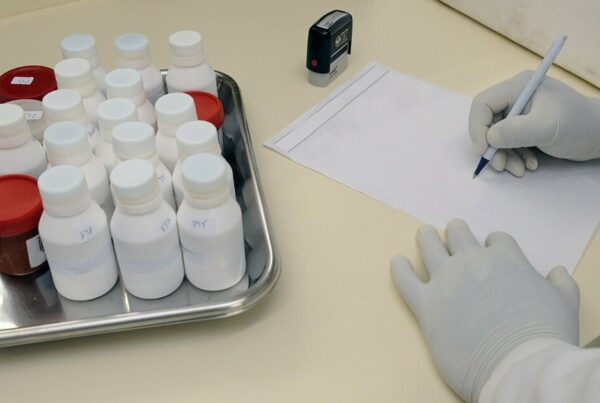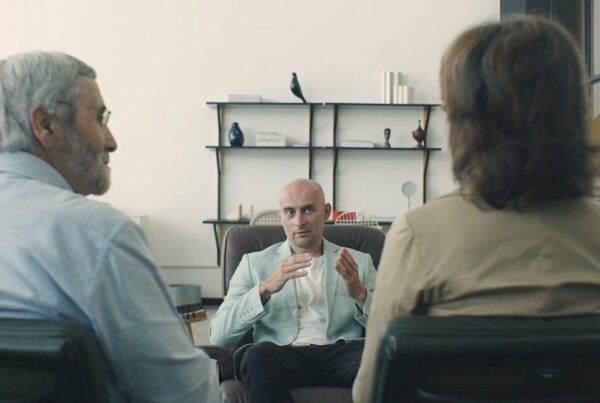How much does it cost to run a clinical trial? The short answer is that the cost varies greatly depending on the type of clinical trial, the phase of development and the area of treatment. On average, it can take over $30 million to take a new drug from concept to market approval, which gives you an idea of why pharmaceutical companies are spending so much money on research and development (R&D). Of course, some types of clinical trials are more expensive than others, so you should definitely be aware of what costs are expected when preparing your own budget and planning your next clinical trial.
What is included in the clinical trial budget?
Before you can even think about setting a budget, you need to know what is included in one. Clinical trials are expensive, but knowing exactly what is going into your budget will help keep you from being blindsided by costs as they arise.
It’s important to remember that every company and clinical trial budget is different. Clinical trials can cost anywhere from $100,000 to $2 million to over $30 million, so any budget you draw up will be a compromise between time and money. When considering your research budget and costs, it’s important to ask yourself questions about what can be done in-house versus outsourced, how many patients you need to reach your desired goal for data collection and patient recruitment, etc.
To put together a clinical trial budget, you’ll need to understand how much the trial’s sponsors are prepared to spen and how many resources you want to devote to the trial. These two factors are going to be intertwined: not only will your total budget have an impact on your available funds, but choosing a higher price point means more money is spent on each item in your project. What’s included in your basic startup costs depends mostly on whether or not you choose to use outside help for certain tasks.
There are four sections that should be included in every budget for a clinical trial: basic startup costs, material costs, personnel costs, and data collection costs. Basic startup costs refer to what it takes just to get started with your study. These initial purchases can vary widely depending on your research topic, which is why you should always ask other companies what they spent.
How to start writing a budget for your clinical trial
Before embarking on writing a clinical trial budget it’s important to understand what it’s that makes up the budget. Clinical trial costs is made up of all costs associated with performing a clinical study or trials necessary to gain approval for marketing approval of a new drug in the U.S. The cost can vary greatly depending on factors such as size and duration of study.
The budget should include all costs associated with a clinical study such as monitoring costs, direct administrative cost and indirect costs. Note that many of these costs vary widely based on what type of therapy you’re planning to test (new drug or biologic), but many will not vary too much. Research and development activities should also be considered in the budget, including pre-clinical work and clinical trials. There are also post-approval expenses, such as post-marketing studies or surveillance of approved products.
There are also many clinical trial budget templates available for download, such as this one from SOFPROMED. Starting with a template gives you an idea of what information will be needed for your budget. You should adjust the template to suit your clinical trial’s specific needs.
Who pays for clinical trials?
So you’ve made it past that whole idea stage and have decided that a clinical trial is a must. And now comes the big question: Who pays for it? Well, no one really wants to foot the bill for your shiny new idea, so you might be in for a bit of a fight here.
Every organization has its own criteria as to what gets funding and how much. To get some idea of how big your check is going to need to be, take a look at organizations like NIH (the National Institutes of Health), CFDA (Center for Devices and Radiological Health), FDA (Food and Drug Administration,) or CRO’s (Contract Research Organizations).
Additionally, many organizations have requirements for how much funding you must contribute. So if your idea is revolutionary and you can’t afford to pay for it yourself, don’t fret. The NIH will only ask for a 50% contribution from you and even then, they won’t penalize a trial if a sponsor cannot provide that much money.
They simply redistribute funds to other trials or in certain circumstances offer grants of up to 100% of costs based on priorities established by Congress. That being said, keep in mind that when making your budget and figuring out who will be responsible for paying what share of costs associated with clinical trials that it’s very difficult to predict exactly how much of each kind of cost will fall on you.
Also keep in mind that you can use grants to help get funding, but there are many rules and regulations that go along with applying for them. Most foundations have deadlines set months in advance, meaning you need to start preparing much sooner than it seems you should.
The application process is often very rigorous and many applicants find they need help from professionals just to fill out their forms correctly or make sure they’re filling them out within a given time frame. Moreover, having an application rejected can cause a lot of wasted time for both parties and may even damage your credibility.
How much do clinical trials cost?
So just how much do clinical trials cost? This can vary depending on a number of factors, but it’s important to get quotes from multiple CROs, in order to find out exactly how much clinical trials will cost. Generally speaking, drug development is done on a cost-plus basis, where vendors are reimbursed for costs they incur plus an agreed upon profit margin.
Your clinical trial costs will also vary depending on how long you’re running it. There is a reason why some trials can cost upwards of $100 million to run! The average cost of a Phase I study is $30 million and the average cost of a Phase II study is $50 million.
These costs include staffing and site fees paid to multiple CROs for full-service management of a study, but not other costs like filing fees and drug development or manufacturing costs. Pharmaceutical companies usually contract with one CRO for all stages of development, although it’s increasingly common to use two different CROs at different stages in order to mitigate risk of clinical failure.
Prices also vary based on which region you’re conducting your study in. Some regions are more expensive than others, largely because of supply and demand, as well as regulatory requirements. Europe is considered one of the most expensive regions to conduct clinical trials, as it has some of the highest safety standards worldwide. Trials conducted in China can be relatively inexpensive due to relatively lax regulatory requirements and lower costs for things like equipment and supplies.
What to have before starting your clinical trial budget
It’s important to have a detailed plan before you start. Imagine if you were flying from Los Angeles to New York, but didn’t know your flight number or that it was a 747 jumbo jet. And you had no idea where JFK airport is. What would you do? The same is true for starting a clinical trial: not having all of your ducks in a row will result in wasted time and money, which is why it’s important to have a detailed plan on paper before launching your study.
Before your study starts, make sure that you have an executive summary ready. This document will serve as a single source of truth throughout your clinical trial. It should include all of your study’s details, from participant eligibility criteria to reporting procedures. If you already have these documents in place, great! But if not, now is a good time to start planning for them and writing them down so that when you begin working on your trial budget, it will be complete.
When you’re preparing to launch your trial, you should be completing all of your regulatory requirements, which include registering your study with a government agency. This process can be difficult and expensive if you don’t start planning for it early on. Registering a study involves a lot of paperwork and other details that can get confusing if you try to tackle them alone.
As you might expect, a lot of companies and institutions want to make sure that everything is as professional as possible before they start your study. If you don’t have an official budget put together with key pieces of information included in it, your chances of getting institutional review board (IRB) approval or funding may be low. This means not only more time spent writing paperwork, but also that you’ll likely need to do additional work to try and improve your study’s chances of being approved.
How do you negotiate a clinical trial budget?
Negotiating a budget for a clinical trial is very similar to negotiating any other form of budgeting or purchasing. If you take an aggressive approach and don’t let them off easy, you will likely come out with a better deal than had you been kind and courteous. Many large pharmaceutical companies have researchers who are obligated to make their budgets at all costs, regardless of what they must do to meet that number.
The primary incentives that you can use to negotiate a lower clinical trial budget are lowering your research site recruitment number and offering alternative solutions. These incentives give pharmaceutical companies what they want (their research budget met) while also allowing you to still maintain some measure of success for yourself. If a pharmaceutical company has an offer from multiple sites, they will likely choose their preferred location. This can be used as leverage when negotiating a the budget with them.
You want to make sure that any negotiations you perform doesn’t compromise your data integrity by limiting your data pool or data collection. Clinical trial data integrity is ensuring that data remains accurate and real. This ensures that you are getting an accurate result of your research, without getting skewed results due to interference. Data integrity is important because it allows researchers to get accurate results when they review their data. This can reduce concerns over false advertising claims as well as help increase credibility in pharmaceutical companies.
Does your sponsor/client understand what they are getting into?
When you are communicating with sponsors and your client, keep them updated on what is happening so that they understand how their money is being spent. Always let them know exactly where you are in every stage of preparation and every specific task, because that’s how they get to approve or change budget requests. Keeping your stakeholders informed will ensure they have confidence in you, which leads to better overall results from both a financial and clinical point of view.
Stakeholders want to know about your progress and have input on important decisions. One way to keep them informed is by making sure you are sharing regular status reports (at least weekly) with everyone involved in your study, including your sponsor and regulatory consultants. This type of communication is essential when it comes to keeping everyone informed about what is happening in your clinical trial so that they can react quickly if there are any issues.
Who needs to approve your clinical trial budget?
The FDA regulates clinical trials, but local committees are often responsible for approving trial budgets. Because so many members need to approve it, clinical trial budgets can take months to gain approval. This is especially true if you’re working with a smaller budget and fewer organizations, like private hospitals or universities.
The more sponsors your clinical trial has, and/or a larger budget you have, the faster it will be approved. Typically, for trials run by major hospitals or universities which are covered by many different insurance plans and government agencies, budgets get approved in under 30 days. However, if you’re running a small private hospital trial with limited funds and a small number of sponsors involved (not to mention less prominent researchers), expect your trial budget to take several months.
The clinical trial budget approval process can be long and arduous, but it’s absolutely necessary. That’s because in order to gain FDA approval for your drug or device, you must show that you’ve considered all possible costs and have enough funding to complete your clinical trial.
Where do these numbers come from anyways? And how accurate are they?
Every clinical trial costs hundreds of thousands to millions of dollars. Depending on what’s being tested, how many people are being studied, and whether it’s being used in conjunction with another treatment or not. This price tag includes lab work, physical exams, medications, and other elements that contribute to research studies.
However, predicting a budget for the clinical trial is always a little tricky. The final cost will likely fall somewhere between where you initially expect it to be and where it actually lands. That’s just because clinical trials always have a few surprises along the way, whether they are large or small.
As with many things in clinical research, it’s always a good idea to under-budget, rather than over. Your budget should include as much time and money as possible so that you don’t end up cutting corners or getting into financial trouble.
Who else can help you estimate clinical trials cost (or at least sanity check them)?
As you’re preparing a budget, consider meeting with an industry professional who can help you outline your clinical trial costs and time frames. Most clinical research organizations (CROs) have analysts or project managers who can provide assistance in estimating costs. These professionals will help you understand what services will be included in your budget and what outlays are just unexpected bumps along the road. A pharma consultant or industry attorney can also be of assistance when planning a budget.
There are many industry professionals who can help you estimate costs in advance of your clinical trial. Pharmacy consultants, pharma analysts, and pharmaceutical attorneys are just a few examples of individuals who may be able to assist you with your budget.
Variables that effect clinical trials cost include everything from staffing levels and number of patients to supplies and equipment. Each of these factors can have a substantial impact on your bottom line, so you’ll want to closely monitor these factors during your clinical trial to ensure that you stay within budget.
Writing a clinical trial budget can be a daunting task. Using a template and working with an industry profession can help you get across the finish line.










